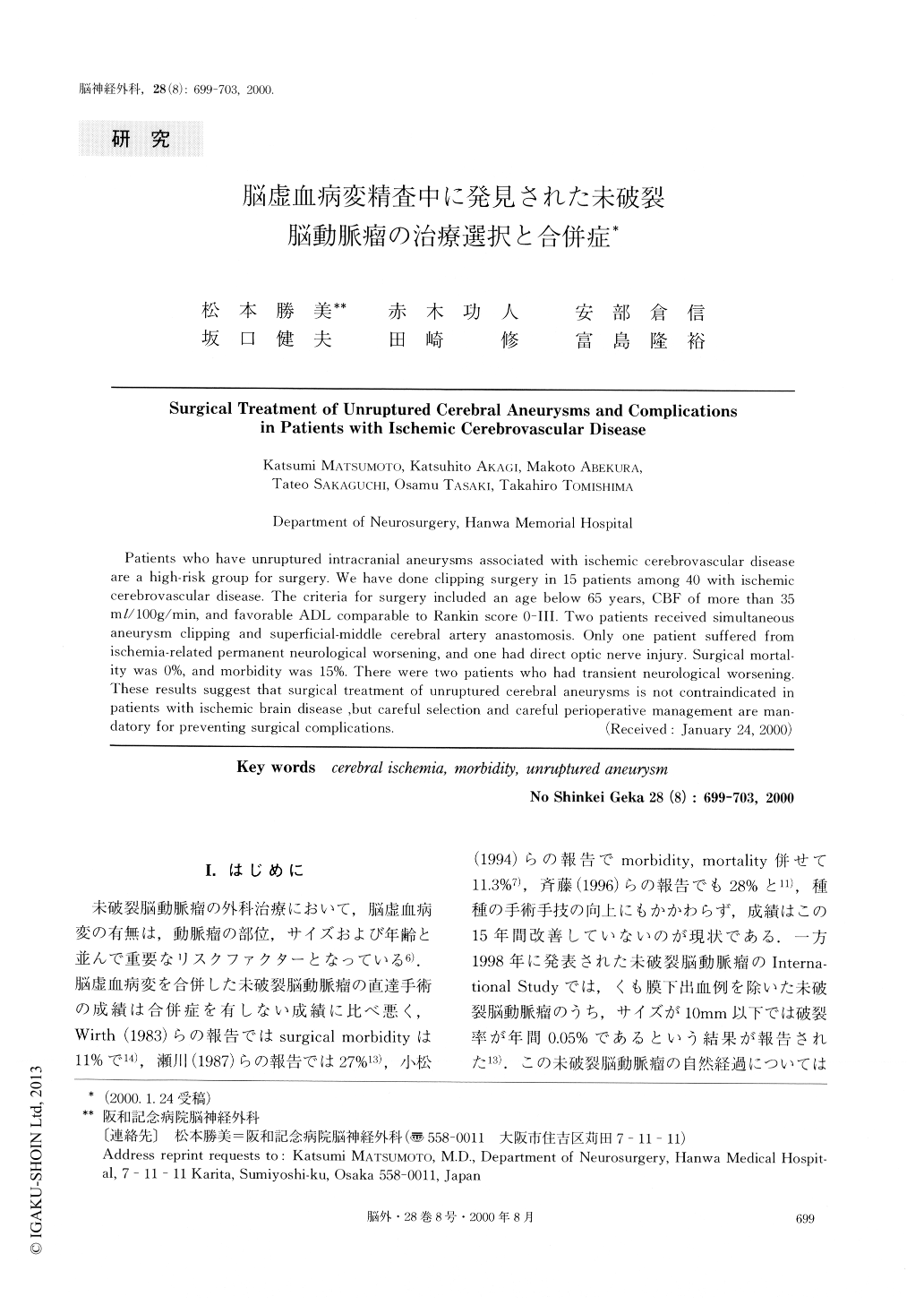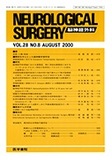Japanese
English
- 有料閲覧
- Abstract 文献概要
- 1ページ目 Look Inside
I.はじめに
未破裂脳動脈瘤の外科治療において,脳虚血病変の有無は,動脈瘤の部位,サイズおよび年齢と並んで重要なリスクファクターとなっている6).脳虚血病変を合併した未破裂脳動脈瘤の直達手術の成績は合併症を有しない成績に比べ悪く,Wirth(1983)らの報告ではsurgical morbidityは11%で14),瀬川(1987)らの報告では27%13),小松(1994)らの報告でmorbidity,mortality併せて11.3%7),斉藤(1996)らの報告でも28%と11),種種の手術手技の向上にもかかわらず,成績はこの15年間改善していないのが現状である.一方1998年に発表された未破裂脳動脈瘤のInterna-tional Studyでは,くも膜下出血例を除いた未破裂脳動脈瘤のうち,サイズが10mm以下では破裂率が年間0.05%であるという結果が報告された13).この未破裂脳動脈瘤の自然経過については種々のバイアスが作用しているものの,今後の手術適応についてはきわめて慎重に決定しなければならないことを示唆している.筆者らは脳虚血病変を有する未破裂脳動脈瘤症例を年齢や脳血流,術前ADLなどをもとに治療の選択をした.手術合併症をきたした例をもとに脳虚血病変を有する未破裂脳動脈瘤の手術適応とその限界について考察した.
Patients who have unruptured intracranial aneurysms associated with ischemic cerebrovascular disease are a high-risk group for surgery. We have done clipping surgery in 15 patients among 40 with ischemic cerebrovascular disease. The criteria for surgery included an age below 65 years, CBF of more than 35 ml/100g/min, and favorable ADL comparable to Rankin score 0-Ⅲ. Two patients received simultaneous aneurysm clipping and superficial-middle cerebral artery anastomosis. Only one patient suffered from ischemia-related permanent neurological worsening, and one had direct optic nerve injury. Surgical mortal-ity was 0%, and morbidity was 15%. There were two patients who had transient neurological worsening. These results suggest that surgical treatment of unruptured cerebral aneurysms is not contraindicated in patients with ischemic brain disease, but careful selection and careful perioperative management are man-datory for preventing surgical complications.

Copyright © 2000, Igaku-Shoin Ltd. All rights reserved.


